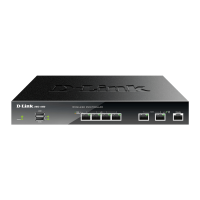Unpacking and Installation
14
DWC-1000 Wireless Controller User’s Guide
Selecting a Location
Selecting the proper location for the wireless controller is essential for its successful
operation. To ensure optimum performance, D-LINK recommends that you perform a site
survey. A site survey should enable you to:
• Identify how Wi-Fi coverage should be provided.
• Determine access point placement locations, and identify areas with weak signal or dead
spots that require additional access points.
• Determine areas of heavier usage that might require dense access point coverage.
• Determine the indoor propagation of RF signals.
• Identify potential RF obstructions and interference sources.
• Run a spectrum analysis of channels of the site to ascertain current RF behavior, and
detect both 802.11 and non-802.11 noise.
• Run an access point-to-client connectivity test to determine maximum throughput
achievable on the client.
Note: D-Link offers a virtual site survey if a live survey cannot be performed. For more
information, contact your D-Link representative.
After the site survey is complete, use the collected data to set up an RF plan using the Basic
Planning Worksheet in
Appendix A.
After you complete the Basic Planning Worksheet, select a location for the wireless
controller. The ideal location should:
• Be flat and clean, with no dust, water, moisture, or exposure to direct sunlight or
vibrations.
• Be fairly cool and dry, and does not exceed 104° F (40° C).
• Not be prone to variations in temperature and humidity, or close to strong magnetic fields
or a device that generates electric noise.
• Not place the wireless controller next to, on top off, or below any device that generates
heat or will block the free flow of air through the wireless controller’s ventilation slots.
Leave at least 3 feet (91.4 cm) clear on both sides and rear of the controller.
• Allow you to reach the wireless controller and all cables attached to it.
• Have a working AC power outlet that is not controlled by a wall switch that can
accidentally remove power to the outlet.

